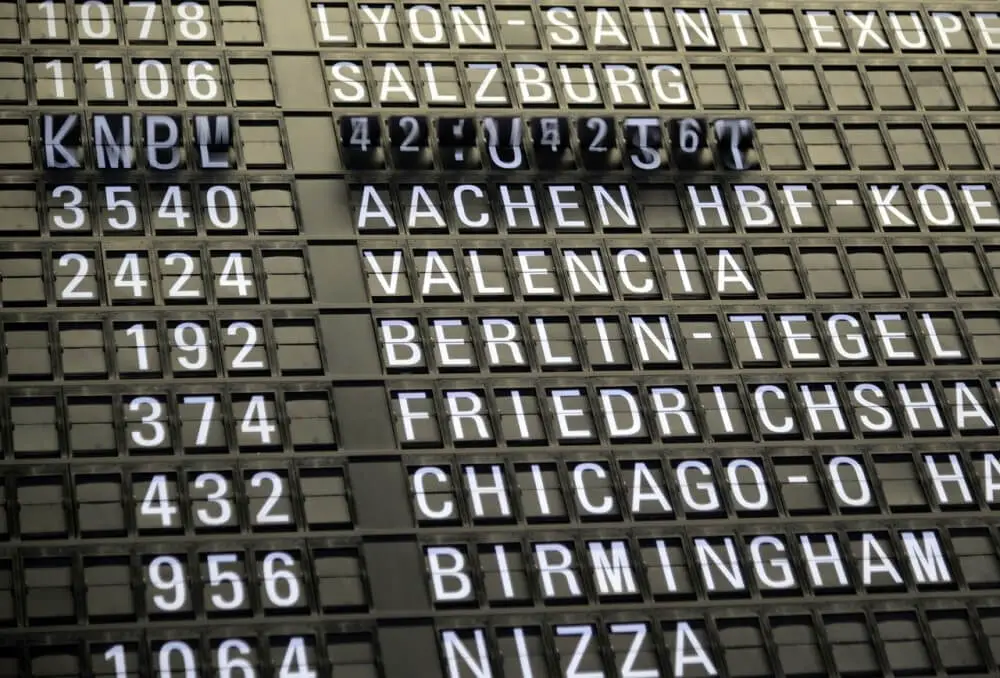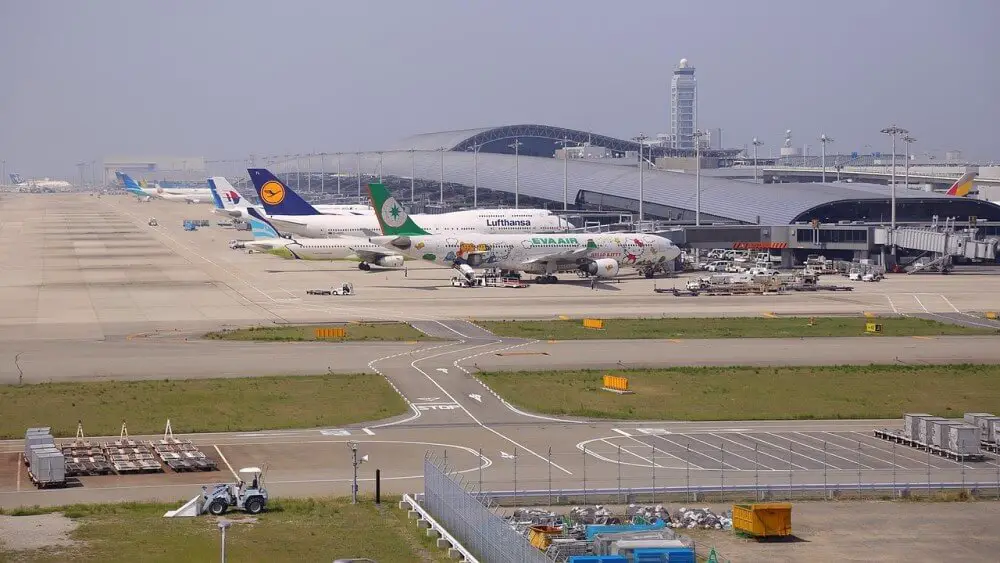International airports are buildings that are true gateways to the world. As aviatic travel hubs, they are often the only method by which people around the world can take off from one country and land safely in another.
But while all airports have the capability to handle aircraft that travel across borders, not all are named international airports. And the reason why is not immediately obvious.
So, with that in mind, let’s explore the question: what makes an airport international?
In short, an airport may be termed as international when it has the adequate connectivity and infrastructure to facilitate international travel. This infrastructure includes security measures, passenger facilities and aerospace management. However, there are no official guidelines that airports have to meet to become international, which means any airport could theoretically be labelled as such.
Read on to find out what the difference is between a domestic and international airport, and whether an airport can be international even if it only does regional flights.
But first, let’s further explore the top four factors behind what makes airports international:
Customs and Immigration Facilities
First on our list of what makes an airport international is the customs and immigration facilities present at the airport in question.
Regardless of where their destination point is, passengers travelling out of a country need to have their documentation checked. International airports are responsible for making sure this process runs smoothly, and as such suitable facilities need to be in place to ensure the safety and security of all travellers.
This is not just restricted to people; customs, for example, is an essential component in ensuring that there is compliance with laws and regulations regarding the import and export of goods. Indeed, customs officials also need to inspect baggage, and make sure that the right duties and taxes are being applied on goods brought into the country.
The customs process also safeguards against the import of dangerous goods, such as narcotics, weapons or other banned goods into a country. Airports are held to safety standards defined by the International Air Transport Association (IATA) and the International Civil Aviation Organization (ICAO).
In a similar vein, immigration facilities are designed to prevent any unauthorised or illegal immigrants from gaining entry to a flight. To do this, they may collect biometric data, such as fingerprints or facial recognition scans, for identity verification and security purposes.
Combined, customs and immigration facilities minimise the risk of terrorism and illegal activities happening across borders. For any airport to be deemed international, it is essential that it includes these facilities, enabling the lawful movement of people and goods while upholding security and regulatory standards.
International Connectivity
Perhaps the most fundamental of aspects that make an airport international is global connectivity. Put simply, in order for an airport to be labelled ‘international’, it needs to facilitate flights to and from various countries around the world.
Most international airports offer extensive flight networks, with direct flights to places all around the globe. Bigger international airports generally accommodate more intercontinental journeys, while some on the smaller side only fly to a select few local destinations.
Indeed, particular airports like Schipol Airport in Europe and Atlanta Airport in the US, have become transit hubs. This means that they are popular points for connecting flights, usually on account of their location.
To make these connections more efficient, these hub airports often facilitate extensive airline partnerships and alliances. This allows passengers to transfer seamlessly between flights operated by different carriers.
Put together, these factors ensure that international airports serve as vital nodes in the global transportation network, connecting people, goods, and cultures across borders and continents.

Capable Air Traffic Control
Naturally, the more planes an airport has to manage, the more comprehensive its aerospace management systems have to be. As such, air traffic control (ATC) is an essential component in the context of international airports.
ATC is responsible for ensuring the safe, efficient, and orderly flow of air traffic within the airport’s airspace and surrounding regions. At big airports, especially those with multiple runways, this can be a complex operation.
Although all airports are equipped with ATC systems, international airports typically have to handle larger and more complex airspace compared to domestic airports. For, it often involves close coordination with neighbouring countries’ air traffic control agencies, which is vital when aircraft cross international boundaries or fly through shared airspace.
International agreements and protocols govern the exchange of information, coordination of flight paths, and handoff procedures between air traffic control units, ensuring seamless operations and maintaining safety standards.
Passenger Infrastructure
In a similar vein, any airport that declares itself international, or is classed as such, has to possess suitable passenger infrastructure. This refers to the wide range of facilities and services, including seating areas, retail outlets and catering options, that are designed to enhance the overall travel experience for passengers.
With a typically large size and stature, international airports invest a lot into passenger infrastructure, ensuring convenience, comfort, and efficient operations. This is evident primarily in its terminal buildings, which are the structures passengers spend most of their time in.
International airports typically have large and modern terminal facilities equipped to handle the high volume of travellers. These terminals are designed with clear signage, spacious waiting areas, and a multitude of amenities such as shops, restaurants, lounges, and duty-free outlets.
When it comes to flight boarding, they also usually feature many gates in the terminal buildings for passengers to navigate to. To guide them, flight information displays and regular boarding announcements facilitate orderly boarding procedures.
In this process, it’s common for international airports to have multiple boarding bridges or jetways to allow passengers to board directly from the terminal building onto the aircraft.
That said, it’s not always the case that regional, private or domestic airports don’t possess many elements of this passenger infrastructure. Rather, it’s something that every international airport must have in order to label itself as such.

Do airports have to be called international to have international flights?
No, airports do not have to be called international in order to handle international flights. The term ‘international’ in an airport’s name typically indicates that the airport has the necessary infrastructure, such as customs and immigration facilities, to handle international flights.
However, there are airports that handle international flights without having the term ‘international’ in their name.
Washington Reagan Airport, formerly known as Washington National Airport, is a prime example. Although it is primarily a domestic airport, it has the infrastructure to handle international flights, allowing it to serve as a port of entry for international arrivals and departures.
On the flip side, there are also airports which are labelled international but are relatively small in stature. As such, the only international flights they run are restricted to certain types of air traffic from the local area.
An example would be Bellingham International Airport (KBLI), located in northern Washington, USA. While its 6700-foot runway is not long enough to handle large wide body commercial aircraft from overseas, it is sufficient for smaller general aviation flights arriving from nearby Canada, which is less than 50 miles away.
Indeed, some airports may primarily serve regional or domestic flights but still have the capacity to handle limited international operations. These airports are often referred to as regional or domestic airports with international services.
While they may not carry the ‘international’ label in their name, they have the necessary infrastructure and services to accommodate international flights on a smaller scale. These airports may offer select international routes or handle international charter flights.
Can airports be international without customs facilities?
While there is nothing stopping an airport being named as international even without customs facilities, it cannot handle international traffic without it. This is because customs facilities are a crucial requirement for an airport to handle international flights.
Without customs facilities, an airport would not be able to handle the necessary procedures for international arrivals and departures. These procedures include immigration checks, passport control, baggage screening, and customs declarations.

What is the difference between a domestic airport and an international airport?
The primary difference between domestic airports and international airports comes in the types of flights they accommodate. A domestic airport primarily serves flights within the same country or territory, whereas international airports typically serve countries all over the globe.
However, it’s worth noting that international airports do tend to cater to the domestic market as well, should there be a geographic and logistical demand.
So, unlike regional airports, international airports need to have the appropriate facilities to process international arrivals and departures. This includes customs checkpoints, immigration control, and additional security measures like dedicated passport lanes.
These facilities allow international airports to handle the unique requirements associated with international flights. While regional or domestic airports have a duty of care to their customers to provide the best service possible, they don’t always have the same regulatory obligations.
That’s it for our guide to what makes an airport international.
Want to know more about what’s happening in the world of infrastructure? If so, explore our selection of related articles. They feature our informative guide to why bridges are covered.
Or, if you’d like more definitions on building and architecture vocabulary, take a look at our selection of building wikis. For instance, explore our explanation of what a tuned mass damper is.
Last Updated on 20 July 2023 by Michael
